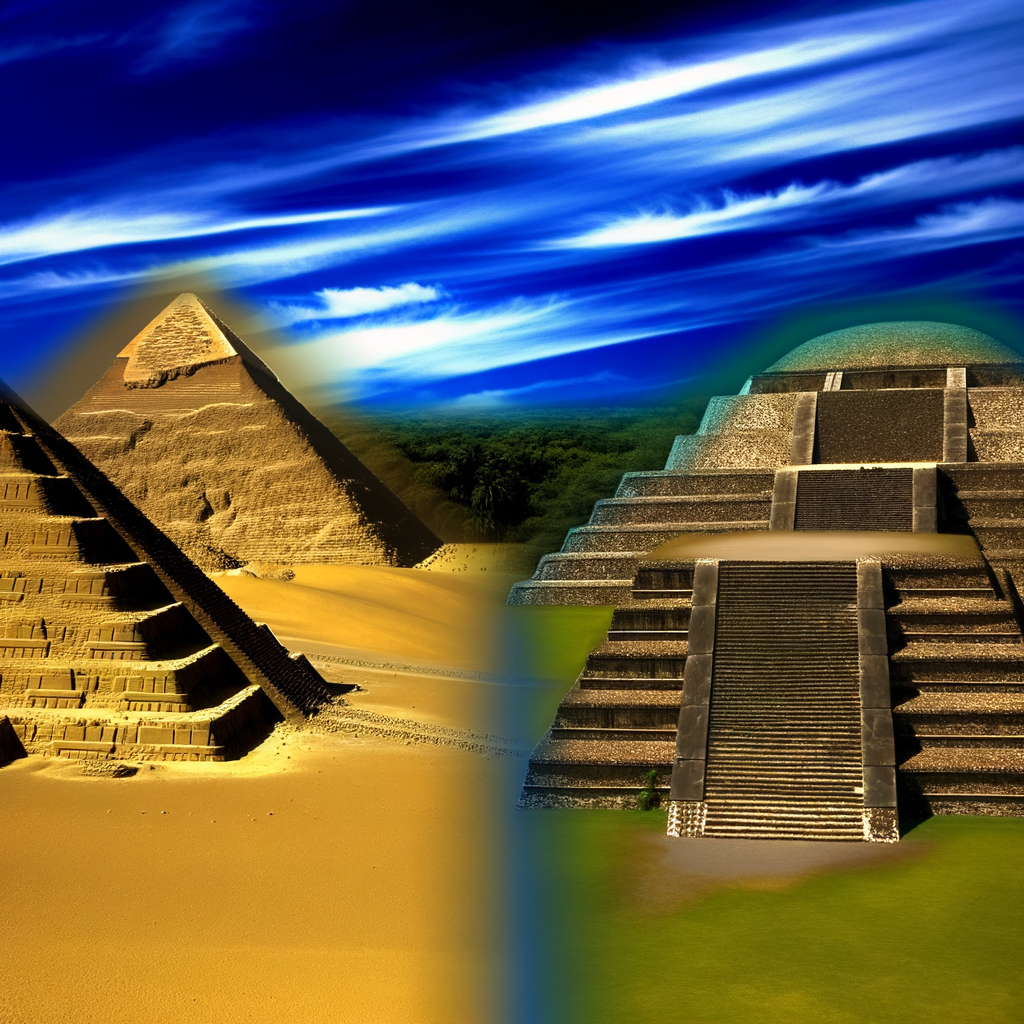The pyramids, majestic structures of antiquity, have fascinated mankind for centuries. Their monumental size, precision workmanship and mysterious purpose raise countless questions that scientists are still seeking answers to. How did the ancient Egyptians possess such advanced mathematical, astronomical and physical knowledge? How did they transport and stack giant blocks of stone? Were the pyramids just tombs of pharaohs or did they hide a deeper meaning? In this article we will delve into the world of the pyramids to discover their secrets and explore the mysteries they hide.
Pyramids in the World
Although the Egyptian pyramids are the most famous, similar structures can be found all over the world. From the pyramids of Giza (Cheops, Chephren and Mykerinos) to the Pyramid of the Sun in Teotihuacan, Mexico, pyramids are testimony to the sophistication of past civilizations. Pyramid complexes have also been discovered in China (Sjensi), in the Himalayas, in the jungles of Cambodia (Angkor) and even in the south of France, where they are attributed to the Knights Templar.
Each of these structures is unique and a valuable source of information about the culture and beliefs of the people who built them. Archaeological and historical research allows us to gradually uncover their secrets, but many questions remain unanswered.

The Great Pyramid of Giza - a Wonder of Engineering
The Pyramid of Cheops, the largest of Giza's pyramids, is a true masterpiece of engineering. Measuring 137 meters high and built from 2.6 million stone blocks weighing between 2 and 70 tons, it is an impressive testament to the craftsmanship of the ancient Egyptians. These blocks are so precisely cut that not even a piece of paper can be inserted between them.
The complex at Giza consists of three main pyramids (Cheops, Chephren and Mykerinos) and six smaller pyramids, probably intended for the wives and daughters of Pharaoh Cheops. Surrounding the pyramids is an extensive cemetery where members of the royal family and high officials were buried.
How Were the Pyramids Built?
There are many theories about the construction of the pyramids. The most popular one says that they were erected by the Egyptians using primitive tools and human muscle power. According to this hypothesis, the builders first had to create a perfectly flat surface for the foundations, using a system of canals filled with water. Then, at quarries in Tura and Aswan, workers quarried and processed the stone blocks, then transported them to Giza by barges on the Nile.
However, this theory raises many questions. How were the Egyptians able to transport such heavy blocks over such long distances? How did they manage to lift them to the next levels of the pyramid? Why have no traces been found of the supposed ramps that were supposed to facilitate transportation?
Alternative Theories
In the absence of conclusive evidence to support the traditional theory, alternative hypotheses are emerging. Some researchers suggest that the pyramids may have been built by an advanced civilization that existed on Earth before the Egyptians. Others believe that the Egyptians may have enlisted the help of extraterrestrial beings.
Still another theory is that the pyramids were not tombs, but high-tech devices used to generate energy or communicate with other dimensions. This is indicated, among other things, by the precise positioning of the pyramids in relation to the sides of the world, the intricate system of corridors and chambers inside the pyramids, and the mysterious acoustic and energy properties of these structures.
Mysterious Chambers and Corridors
The interior of the Great Pyramid holds many secrets. The King's Chamber, located at the heart of the pyramid, has a layout that reflects the position and proportions of the first six planets of the solar system. There are three massive doors leading into the chamber, which could be hermetically sealed. Could it be that this chamber was used for some secret rituals?
The pyramid also has two adjacent chambers, suggesting a duality in its design. The five "sun lids" above the royal chambers may have been filled with some special material. The pyramid's entire structure appears to have been designed to create resonance, with strips on the walls dividing the chamber into proportional sections, acting as a regulator.
"Sarcophagus" of the Pharaoh - Energetic Heart of the Pyramid
The King's Chamber contains the so-called "sarcophagus" of the pharaoh. Its small size, however, raises doubts as to whether it was really used to bury the ruler. Could it have had a different, more symbolic meaning?
Some researchers suggest that the sarcophagus may have been used in initiation rituals. The priest would immerse himself in it in water, which symbolized death and rebirth. Perhaps the pyramid was the site of mystical ceremonies in which pharaohs contacted the gods and gained access to higher knowledge.
Pyramids are not only impressive structures, but also treasure troves of knowledge about ancient civilizations. Their secrets are still waiting to be uncovered, and new archaeological and scientific research is shedding more and more light on their history and purpose. Perhaps in the future we will be able to fully understand the significance of these monumental structures and learn all the secrets they hide.

These pyramids... so many questions, so few answers. I always wondered how they did it with those stone blocks. After all, it's inconceivable to transport such weights with primitive tools!
@kapturek And the precision of workmanship? How did they cut these stones with such precision? It would have to be a laser! Or maybe some forgotten sound technology?